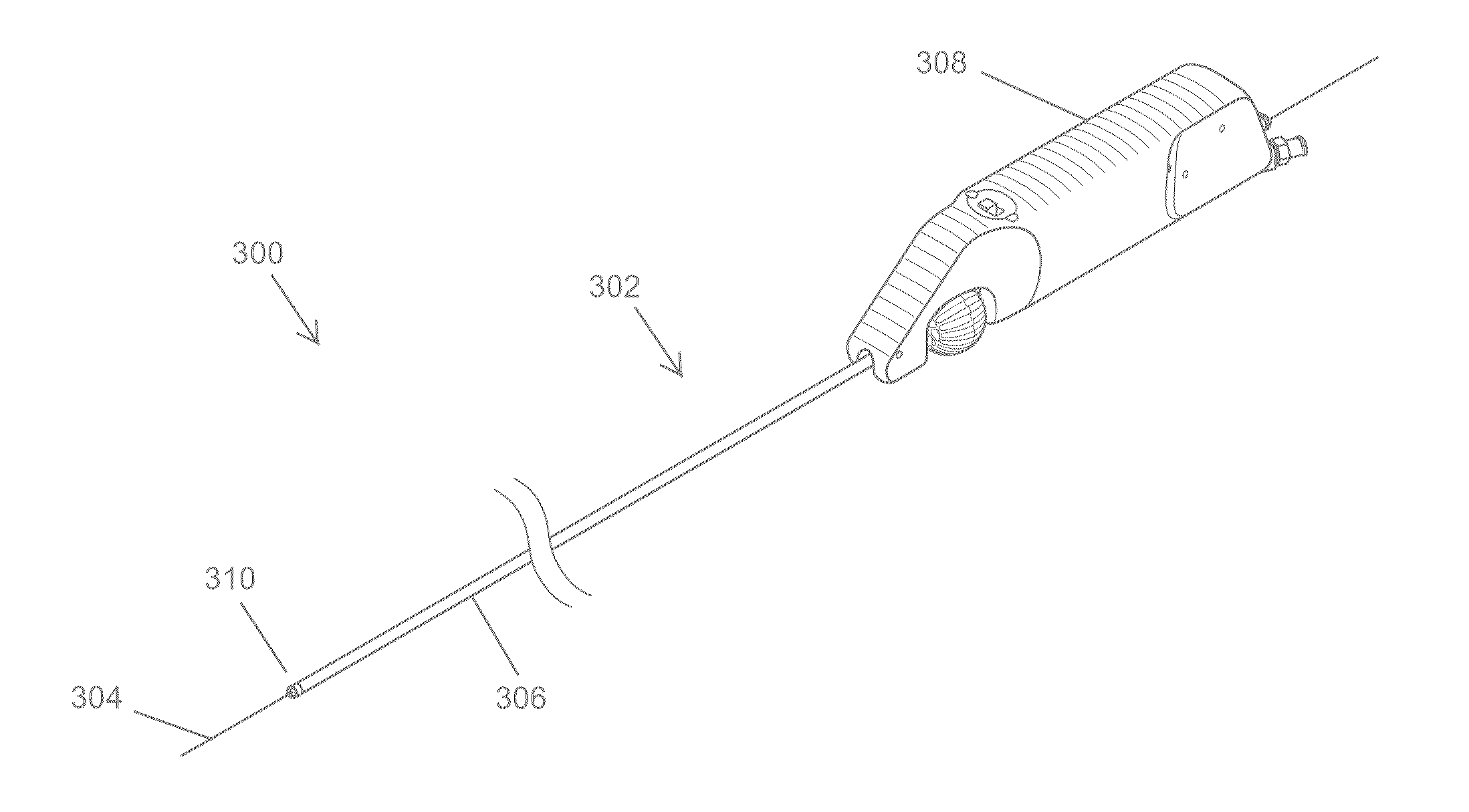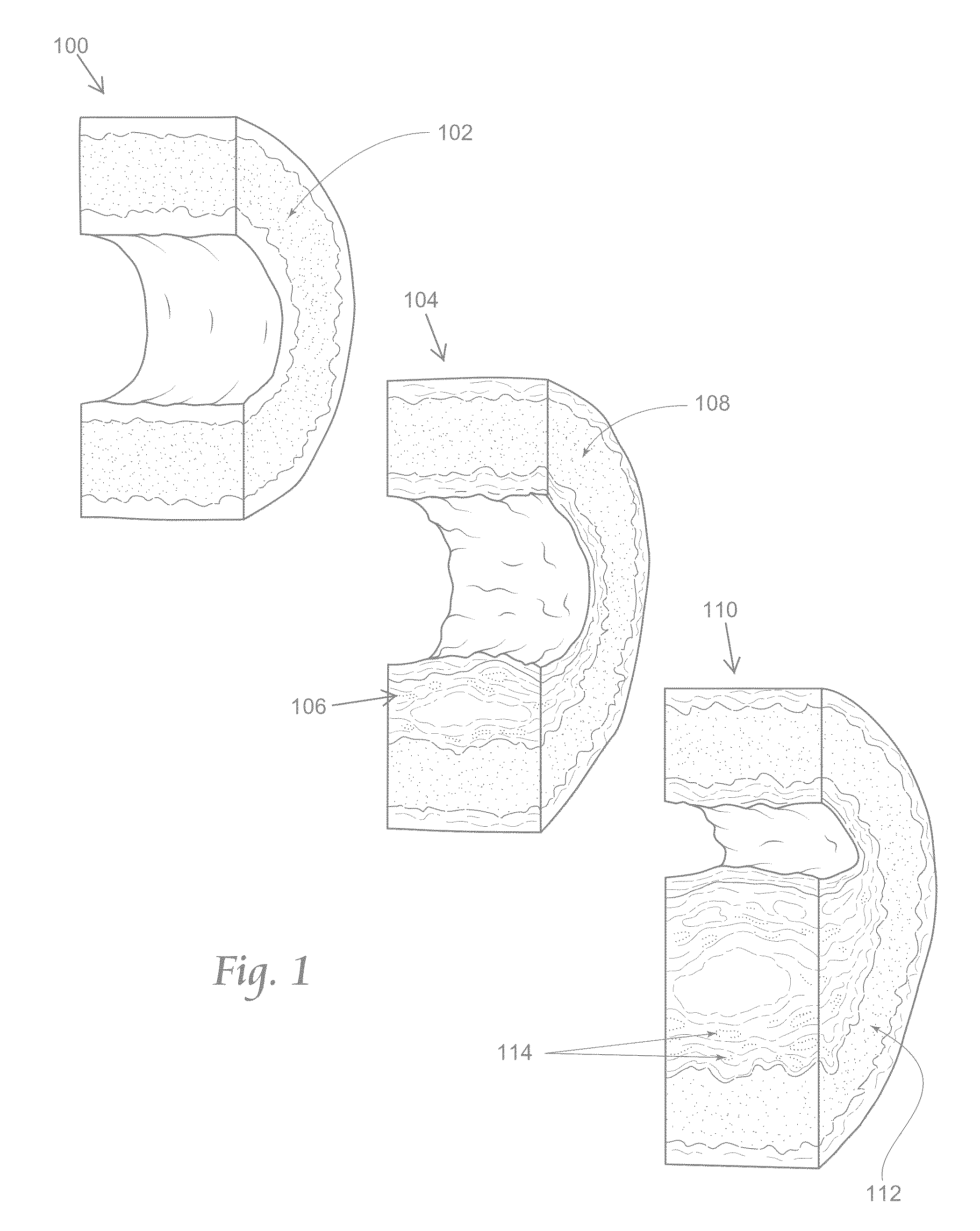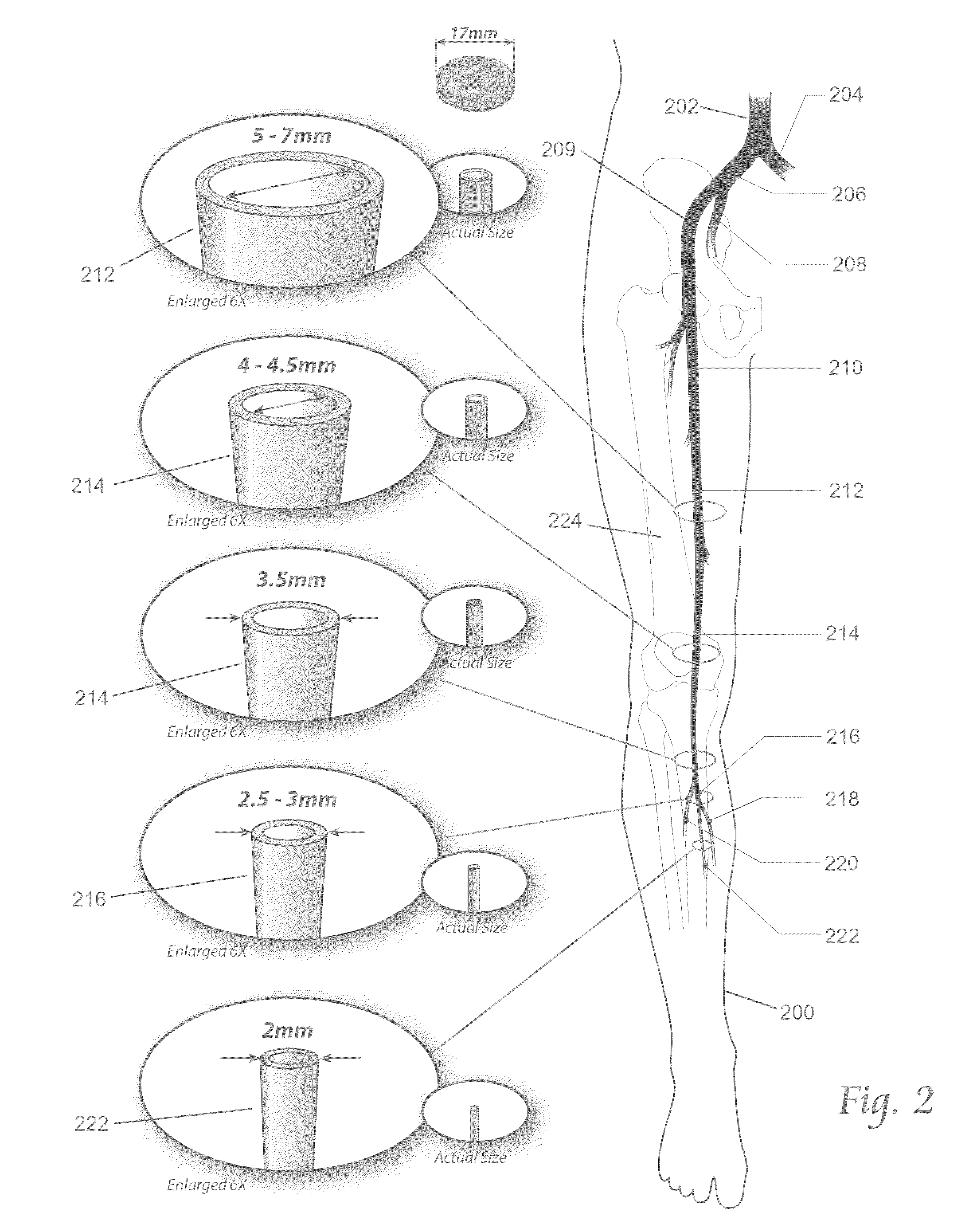Atherectomy apparatus, systems and methods
a technology of atherectomy and apparatus, applied in the field of occluded body lumens, can solve the problems tissue damage or tissue death, and difficulty in blood flow therethrough, and achieve the effects of scar tissue formation, scar tissue formation, and scar tissue formation
- Summary
- Abstract
- Description
- Claims
- Application Information
AI Technical Summary
Benefits of technology
Problems solved by technology
Method used
Image
Examples
Embodiment Construction
[0040]One of the clinical challenges of atherectomy arises from the native anatomy of certain peripheral regions where atherectomy is indicated (for example, in the leg). Accordingly, it may be useful to describe the anatomy of the leg. FIG. 2 shows the anatomy of major arteries of a leg (200) (the right leg is shown for the purpose of illustration). Also shown there is the abdominal aorta (202), the left iliac artery (204), the right iliac artery (206), the internal iliac artery (208), the external iliac artery (209), the common femoral artery (210), the superficial femoral artery (212), the popliteal artery (214), the tibioperoneal trunk (216), the posterior tibial artery (218), the anterior tibial artery (220), and the peroneal artery (222). The diameters of the peripheral arteries of the leg generally taper from larger to smaller in the direction of arterial blood flow from above the knee to below the knee.
[0041]The abdominal aorta (202) is the largest artery in the body, and it...
PUM
 Login to View More
Login to View More Abstract
Description
Claims
Application Information
 Login to View More
Login to View More - R&D
- Intellectual Property
- Life Sciences
- Materials
- Tech Scout
- Unparalleled Data Quality
- Higher Quality Content
- 60% Fewer Hallucinations
Browse by: Latest US Patents, China's latest patents, Technical Efficacy Thesaurus, Application Domain, Technology Topic, Popular Technical Reports.
© 2025 PatSnap. All rights reserved.Legal|Privacy policy|Modern Slavery Act Transparency Statement|Sitemap|About US| Contact US: help@patsnap.com



